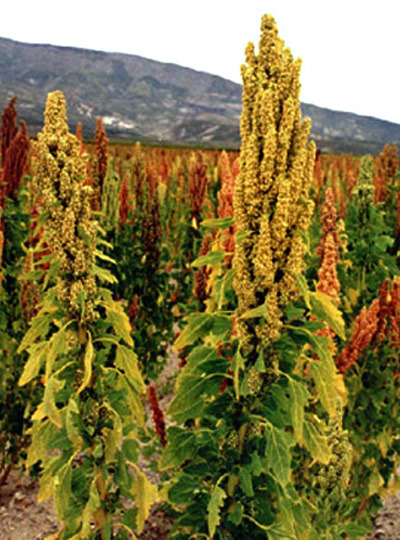Sage is here to help.
Feel like you could be eating better? Not sure what to change or where to look? Sage Nutritious Solutions make it easy for you to discover the wide, wonderful world of balanced, healthy, bangin' food.
Ingredient Spotlight: Quinoa
Quinoa has made a huge hit on the food market recently, and rightfully so. Prices have increased to the point the farmers who grow it can’t even afford it. So, what is the deal with this unique-looking food? Some people compare it to rice, other couscous, and some have no idea what it is. In today’s Ingredient Spotlight, we are going to uncover some truths about this delicious grain!
Quinoa is a grain in the same family as both buckwheat and the tumbleweed, where the seeds are the food that we purchase and consume. It has a nuttier flavor than rice, and is chewy like barley. The flavor has an impact on the palate and whatever you cook it with. Although culinarily versatile, a dish made with quinoa will NOT taste like the same dish made with rice or couscous. The plant looks like this:

The outside of the seed (called saponins) is extremely unpalatable and in America, is processed to remove this coating. When you purchase quinoa, the packaging instructions will always direct you to rinse the grain before cooking. This is to further remove any leftover saponins from the quinoa that may have been leftover. Be sure to rinse the quinoa until it is no longer foamy and the rinsing water is only slightly opaque. When prepared correctly, quinoa is fluffy and does not easily clump, even when cooled. It will absorb liquids such as sauces and vinaigrettes, but not as much as pasta or rice. The grain is a bit firmer, with more texture that allows it to maintain its integrity when standing up against a liquid.
Nutritionally speaking, quinoa has been dubbed as one of the many "superfoods." If you have seen my Video on SuperFoods (https://www.youtube.com/watch?v=3mTSeG2LHf4), then I don’t like to pursue this claim any further. However, it is nutritionally packed and actually quite delicious. One Slice (from The Slice Plan: www.the-sage.org/thesliceplan) equals to about 1/3 cup of quinoa, cooked.
Per 1 cup portion, there are:
• 24 grams Protein (as much as a recommended serving of meat)
• 222 calories
• 3 grams of fat
• 58% DV (daily value) of manganese
• 40% DV phosphorus
• 40% DV copper
• 30% DV magnesium
• 21% DV riboflavin (vitamin B2)
• 12 grams of fiber (almost a third of a person’s daily recommended amount)
Quinoa’s protein content contains all nine essential amino acids, making it a "complete protein." The fat that comes from quinoa is "good fat" known as monounsaturated fats. Studies on quinoa have also shown a small amount of Omega 3 fatty acids. While the type of Omega 3 fatty acids found in quinoa needs to be converted in the body to the one that benefit us, it is cool to find it in a grain! Quinoa also has high anti-inflammatory and antioxidant properties that can help your body fight against infection and disease.
With a high level of protein, fiber, and a reasonable amount of carbohydrate, eating quinoa will satisfy your hunger and a lot of your nutritional needs that most people go without. Sure, the hype (and price: about $5 per pound at Trader Joes food market) may keep you away from cheaper grains such as rice and pasta, but the nutrition benefits should steer you back to taking quinoa for a spin. And let’s not forget about the flavor. Try quinoa salads, stir-fry, or alongside your favorite meat & veggie!
Check out the abundance of quinoa recipes coming this month on www.the-sage.org/recipes, www.Pinterest.com/thesageculinary, and on Instagram @zcooks!
Happy Eating!
